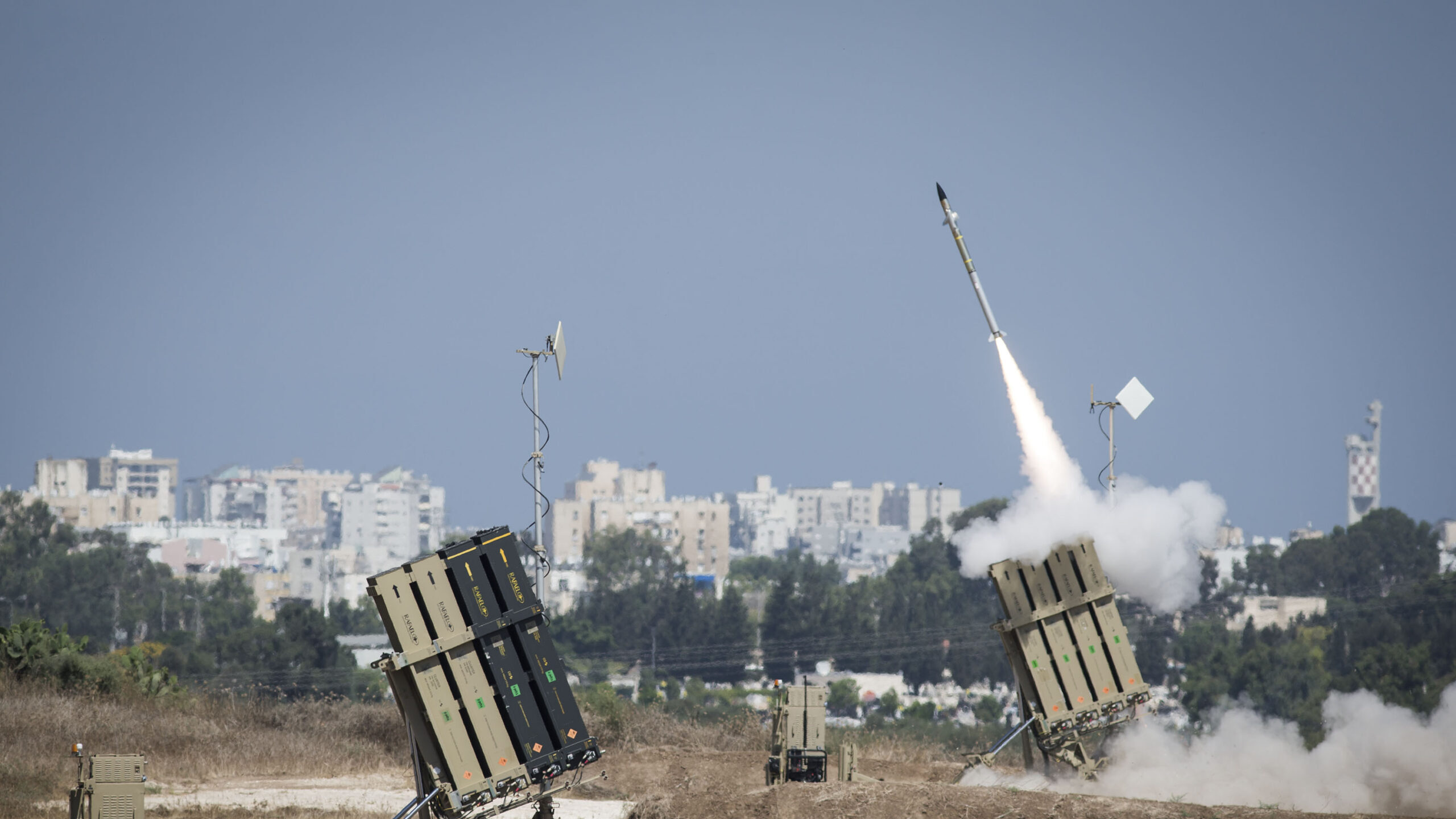
The Iron Dome air-defense system fires to intercept a rocket over the city of Ashdod on July 8, 2014, in Ashdod, Israel. (Photo by Ilia Yefimovich/Getty Images)
WASHINGTON — RTX subsidiary Raytheon and Israel’s Rafael announced today they have formally decided to establish a new facility in Arkansas to churn out Tamir and its US-variant SkyHunter missiles for the Iron Dome air defense system.
RTX said in an announcement that “[t]hrough the established Raytheon-Rafael Area Protection Systems joint venture, the companies have committed to a $33 million capital investment to establish the new facility” in East Camden, Ark. The facility will make missiles “for the U.S. Marine Corps and other allied partners.”
“This new Camden site will be the first all-up-round production facility in the U.S. to help support the Armed Forces and allies across the globe with this highly capable air-defense missile,” Raytheon’s Tom Laliberty, president of Land & Air Defense Systems said in the announcement.
RTX said the joint venture plans to break ground on the new facility before the end of the year and start producing missiles in 2025.
The announcement has been long in the making, as it’s been three years since Raytheon and Rafael said they wanted to make missiles stateside. In July, the US Marines Corps publicized a visit to East Camden where officials discussed the possibility of adding an Iron Dome missile production site there. East Camden, a small town in southern Arkansas just outside Camden proper, is home to an existing Raytheon facility, as well as those belonging to other defense contracting giants, including a site where Lockheed Martin produces HIMARS long-range launchers.
The Iron Dome defense system rose to prominence in Israel where for years it has been a key part of a layered air defense designed to protect the nation from missile, rocket, mortar and UAV attacks — with high marks from the Israeli military for much of its use — though it has reportedly strained its capabilities during and since the Oct. 7 barrages from Hamas.
The US Marines envision using a truck-mounted Iron Dome launcher with SkyHunter missiles for part of what’s called their Medium Range Intercept Capability (MRIC) program.
“MRIC is a middle-tier acquisition rapid prototyping effort, serving as a short-to-medium range air defense system that fills a crucial capability gap in the Indo-Pacific’s contested theater,” Lt. Col. Matthew Beck, product manager for A-MANPADS/MRIC, said in July. “Although it was primarily designed for cruise missile defense, MRIC also boasts capabilities against other airborne threats and has demonstrated a high level of success in integration efforts through a series of live fire events.”
The US Army also owns two Iron Dome batteries, and officials said earlier this week they would be sending them back to Israel to aid Jerusalem in defense of its homeland.
“As we’ve said previously, the U.S. will be flowing additional Iron Dome support to Israel. As a result, the Department of Defense is currently engaged in planning to support the provision of U.S. Iron Dome batteries to Israel,” a US defense official said in a statement Tuesday.
Breaking Defense’s Ashley Roque contributed to this report.








